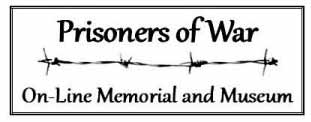Barrow, R
Private Ronald (Ron) Barrow
From Keith Barrow. 10/03/2024.
The 7th Territorial Battalion formed part of the 69th Infantry Brigade which was part of the 50th (Northumbrian) Infantry Division.
The 50th Division sailed to North Africa on 23 April 1941 and landed in Egypt 13 June 1941 and formed part of the defensive line around Tobruk during the early part of 1942. This defensive position was known as the Gazala Line and comprised of a series of boxes manned by different brigades.
On 27 May 1942 the German’s advanced and by the evening of 28 May 1942 they had advanced to the north of the 150th Brigade box and it was clear that an attack from the north was imminent. For the next three days the 150th repelled the German attacks but on 1 June 1942, after heavy dive bombing and repeated attacks by Panzers, the 150 th Brigade was overrun and the survivors were taken as prisoners of war (POW).
For the next two weeks the remaining defensive boxes were running low on supplies and resorted to organising raiding parties, to steal supplies to enhance their meagre rations of food and water. The 7th Green Howards took part in a number of these raids.
On the 14 June 1942, the remaining Gazala boxes were ordered to breakout. The 50th Division chose to breakout west then south and swing east around routes the Axis forces had used in their advance. Each brigade within the division, acting as commando style units, fought on to Mersa Matruh. From 22 June 1942 the division formed another defensive box and heavy fighting ensued.
On 27 June 1942 the Germans attacked and the division was almost surrounded. The next day, the Division was ordered to break out and rally at a place called Fuka. Ron was one of those taken prisoner on the 29 June 1942 trying to defend that break out.
Ron was transported to an Italian POW camp, Pigione di Guerra (Campo) PG82 Laterina, Tuscany in April 1943, Prior to the Italian government signing the peace treaty with the Allied forces on 3 September 1943, he was to be transferred to a German POW holding camp, Stalag IVB, Muhlberg.
On 10 September 1943, whilst in transit in Pistoria, he and another fellow POW, Corporal John Bell, escaped and were recapture by the Germans on a train to Rome on 28 October 1943, wearing civilian clothing.
Both men were interrogated under the threat of electric shock and shooting. Ron then continued on the journey to Muhlberg and on 17 December 1943 he was processed by the Germans and transferred to Stalag VIIIB, Lamsdorf, Cieszyn, Poland. He arrived there on 22 January 1944 and six days later, on 28 January 1944, allocated to work camp E563 at Bory, in Poland and forced to mine coal.
Whilst at Bory he and his fellow POWs pursued an active regime of sabotage in order to delay coal output.
His prisoner number was 266682.
During the final stages of the war in Europe the Germans decided to move all allied POWs west toward the approaching Allied advance. A series of forced marches were organised to move 257,000 allied POWs, 80,000 were marched westward across Poland, Czechoslovakia and Germany.
The march from Stalag VIIIB, which started on 19 January 1945, and ended on 29 April 1945 was to be named [by some] the “Lamsdorf Death March”.
The wintery conditions between January and April 1945 were extreme and the mortality rate was high.
For this reason this march was likened to the “Bataan Death March” of 1942.
On 29 April 1945, the survivors reached the Allied forces in the west and the POWs were finally liberated. They were then repatriated to England as part of Bomber Commands “Operation Exodus”.
Ron was flown back to England in a Lancaster bomber and repatriated with his family in Bridlington on 7 May 1945, his sister Dorothy’s, 21st Birthday.
Suggest an improvement to this record





